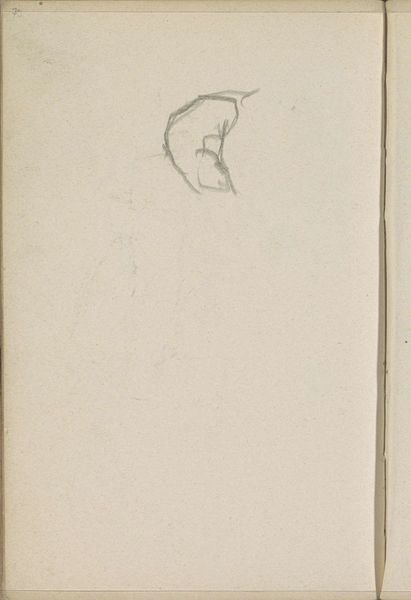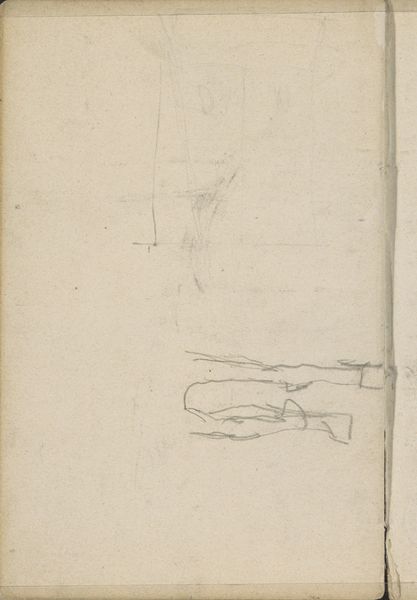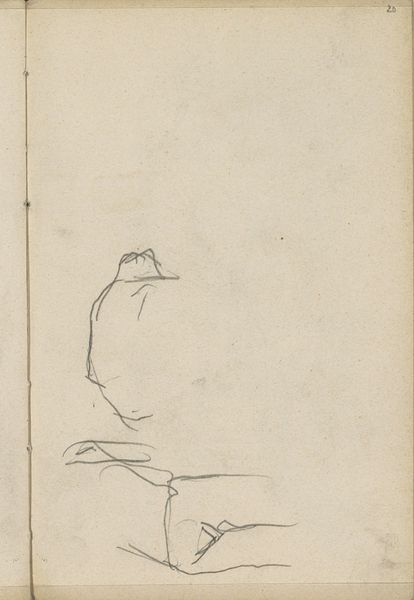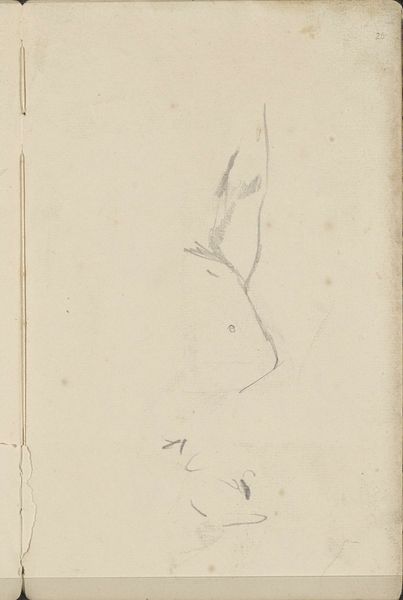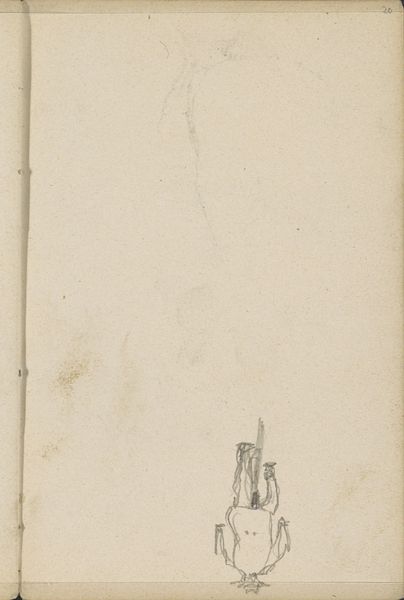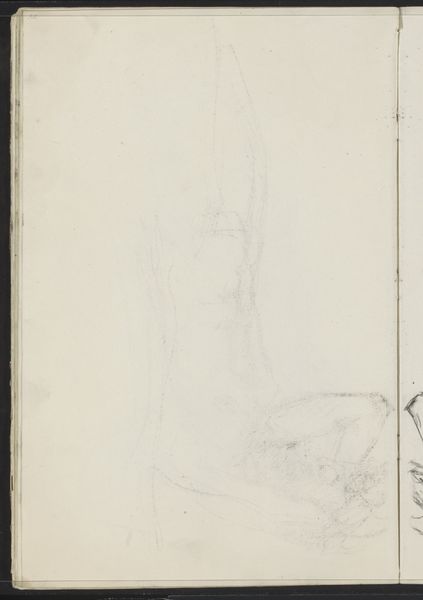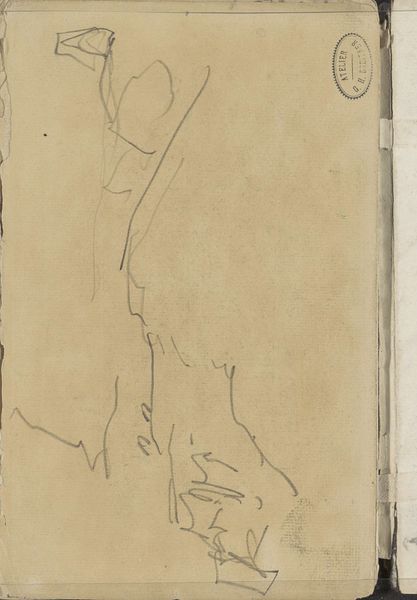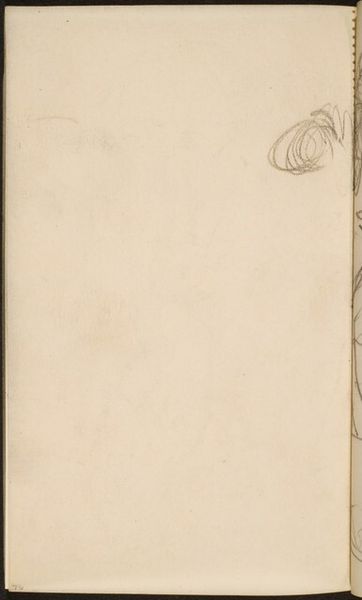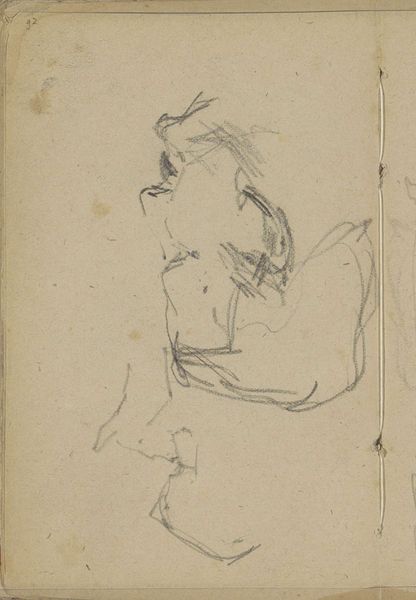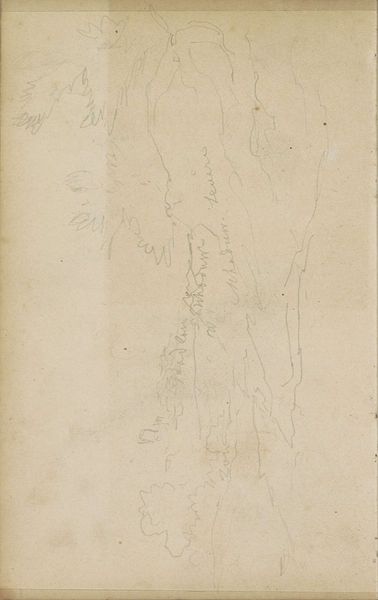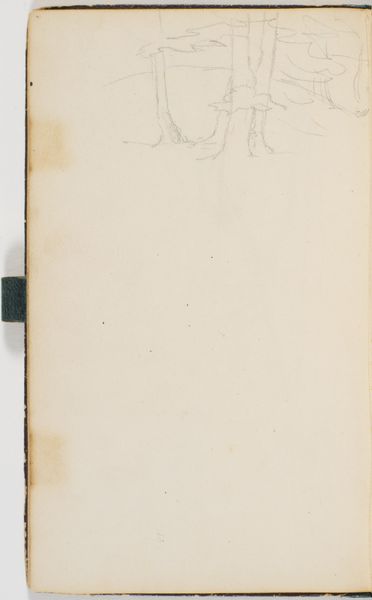
Copyright: Rijks Museum: Open Domain
Curator: Well, that's certainly minimal! My first reaction to Breitner's pencil sketch, "Paard, van achteren gezien," dating from around 1903, is a quiet sort of intimacy. A vulnerable portrayal, even though we are only seeing its back. Editor: Intimacy, perhaps. But I'm immediately drawn to the relationship between the sketch's starkness and Breitner’s context in Amsterdam, a city then rapidly industrializing. Look at the quality of the paper, probably cheap, and the directness of the pencil work, like a laborer's hurried notes. Curator: You’re right to point to the immediacy. Pencil on paper—so simple, but it speaks to the everyday conditions. This sketch is less about aesthetic perfection and more about capturing a moment, an impression of the animal in its working environment. I wonder, what would the value be of this study to the making of larger paintings? Editor: Precisely! It reveals a specific connection. The horse wasn’t just some majestic beast; it was a vital component of Amsterdam's infrastructure. We see it rendered with economy; lines become representations of muscle, shape, movement as it carries out its labor in an rapidly urbanizing and transforming Amsterdam, reflecting broader societal shifts. Curator: It’s interesting how you bring in the theme of labour. It invites us to reconsider the relationship with nature as resource. He has reduced his subject to just the necessary shapes that defined the work he would undertake. And from those few lines and tonal shifts the horse takes shape. Editor: And who benefited from this work? Whose experience of the changing city is rendered invisible while the animal is memorialized? We must remember art is made in particular economic and social circumstances that both inform, and are reflected within, aesthetic forms. Curator: Right, so examining his patronage, how the sketches might have contributed to future commissions by those benefiting most... that completes the reading. Editor: Ultimately, Breitner's fleeting sketch becomes more than just a study; it becomes a lens through which we can examine labour relations, industrialization, and artistic creation in the early 20th century. Curator: Thank you for bringing a broader cultural understanding to the piece, giving us additional interpretive tools to help deepen the viewers appreciation. Editor: Thank you, this exchange really did demonstrate the complexities when reevaluating historical art in our contemporary setting.
Comments
No comments
Be the first to comment and join the conversation on the ultimate creative platform.
